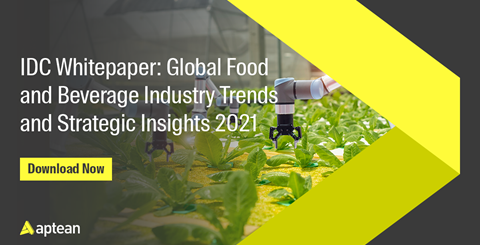How ERP adapts to suit the needs of your business and your food supply chain model
The food and beverage industry is one of the most diverse sectors. It spans a vast range of sub-industries and niches and comprises an entire ecosystem of different business types. Clearly, while each will use its own technology solutions, when it comes to ERP systems there is a need for adaptability.
Speaking the language of food
As is becoming increasingly clear, traditional, one-size-fits-all ERP is quickly becoming outdated in all industries. What the modern food business needs is a system built for its industry or sub-industry which can then be tweaked to meet the requirements of individual businesses.
Put it this way - it is far more logical to adapt food-specific ERP to your needs than it is to try to “teach” a standard ERP system to understand the nuances of the food industry. A standard and a food-specific system could have identical features in theory. But in practice the food-specific option will always win out, because its core functionality is inherently suited to the industry.
ERP tailored to your position in the supply chain
As Aptean VP Jack Payne discussed during a recent talk on farm to fork traceability, the number of links in a modern food supply chain can be huge. Using the simple example of the tomato sauce base on a frozen pizza, Jack demonstrated just how many steps there are between the farm growing the tomatoes and the supermarket selling the pizza. With this being the same for every ingredient, it’s easy to see how even basic pre-prepared food products can rely on tens of different companies along the way.
The challenge for food ERP is how it can deliver a tailored service for these different businesses. The farm growing our tomatoes and the processing factory turning them into tomato paste are both food businesses in the same supply chain - but their requirements will be markedly different. The solution is an array of flexible business modules to cater to each need. For instance, Aptean Food & Beverage ERP includes different modules for fresh produce and food companies:
- Grower
- Trader
- Repacker
- Packer
- Grader
- Processor
- Manufacturer
- Producer
- Distributor
- Third Party
This shows us the inherent flexibility of ERP. All these modules have been created by Aptean Food & Beverage ERP to meet the challenges the different business types face. Solutions can be built with any number of these modules in any combination, and added or removed as a business changes or diversifies.
But ultimately they are all part of the same platform, with the same interface, user experience and core food and fresh produce functionality. This is how the most intelligent ERP systems shapeshift to give individual companies exactly what they need.
Flexibility through mobile solutions
Another way modern ERP demonstrates its flexibility is through mobile integration. Embedding mobile solutions within a food ERP system has a number of universal benefits - for instance reducing errors and paperwork, providing personalised schedules for individual members of staff and of course extending all core ERP features to the workforce.
But mobile solutions also enhance operations in more specific ways for different business types. For instance, quality control and warehousing applications are especially beneficial to companies with sizeable production lines and those who need more control and visibility over their large inventories.
What’s more, most modern ERP solutions will be at least partially cloud-based. This along with the presence of flexible mobile solutions has extended the usefulness of food ERP beyond the boundaries of a company’s site - this is more important than ever given the restrictions Covid-19 has put on in-person working.
The best ERP solutions blend overarching industry principles, best practices and functionality with the ability to tweak to the specific needs of an individual company. This is why it’s so important for food businesses to invest in food-specific solutions built and supported by experts that truly understand the nature of the industry first and foremost. From that point, there’s no limit to how you adjust a solution to your business’ requirements and its place in the supply chain.
 Nederlands
Nederlands English
English



